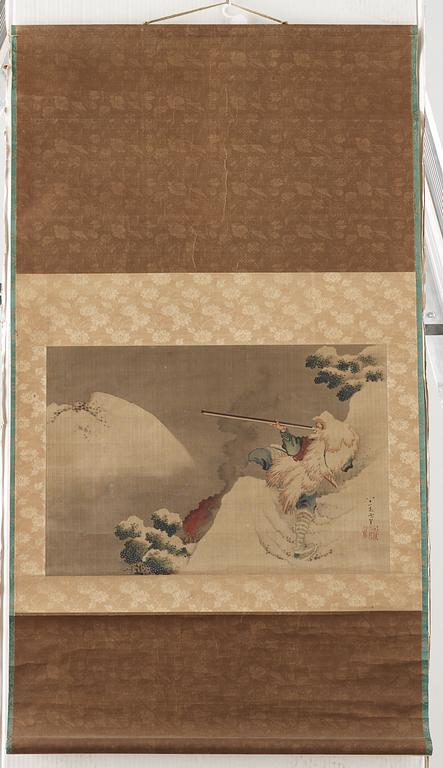Katsushika Hokusai, his school
A hanging scroll depicting a man with rifle in a snowy mountain landscape, School of Hokusai.
Ink and colour on silk. 37,7 x 56,2 cm (120 x 68 cm with mounting).
Rolling folds, stains.
Provenance
Presumably sold at an exhibition at Mücsarnok, Budapest in 1909 (lot 145), according to old label.
Designer
Katsushika Hokusai (1760-1849) is considered one of the greatest artists in Japanese history, and one of the important masters of the Japanese woodblock print. He was the son of the mirror maker Nakajima Issai and was born in 1760 into a family of craftsmen where he reportedly started drawing as early as six years old. Trained as a woodcarver, Hokusai was an apprentice to the artist and printmaker Katsugawa Shunsho, but was forced to quit seven years later as he had his own ideas about art. Hokusai questioned the strict Japanese principles for images and tested new techniques and perspectives and was not recognized until his 40s. He created the series 'Fugaku sanju-rokkei' (Thirty-Six Views of Mount Fuji), between 1830-1832, over seventy years old. The series actually consists of 46 views, including the world famous 'Under the waves off Kanagawa'. Hokusai's pictures came to Europe, along with the works of other Japanese woodcut artists, in the latter part of the 19th century and came to influence many of the Western world's most important artists.
Read more










































